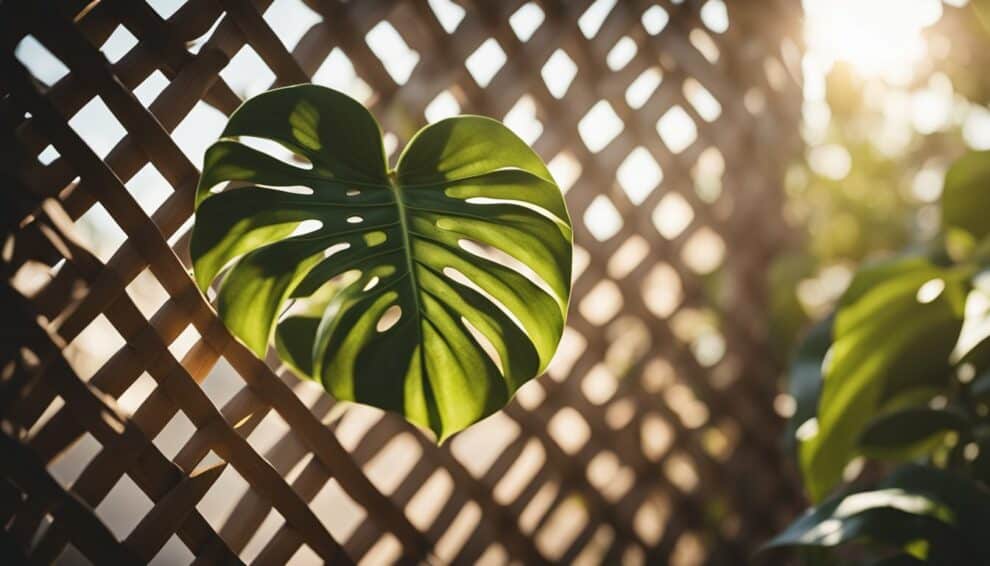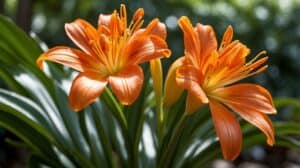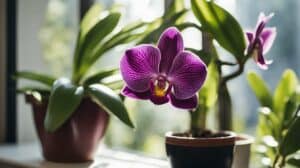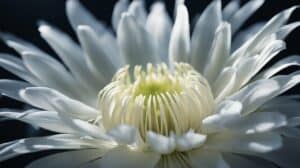Monstera Adansonii, commonly known as the Swiss Cheese Vine, is a popular houseplant that has taken the plant world by storm.
Its unique foliage, characterized by holes and splits, gives it an exotic appearance that is hard to resist.
The plant is easy to care for and is an excellent choice for beginners who are looking to add a touch of greenery to their homes.

The Monstera Adansonii is native to Central and South America and is a member of the Araceae family.
It is a climbing plant that can grow up to 20 feet in its natural habitat, but when grown indoors, it usually grows up to 6 feet.
The plant’s leaves are dark green and have a leathery texture, with holes and splits that give them a unique lattice-like appearance.
The Swiss Cheese Vine is a fast-growing plant that can quickly fill up space and add a tropical vibe to any room.
Getting to Know Monstera Adansonii
Origin and Natural Habitat
Monstera Adansonii, also known as the Swiss Cheese Vine, is a tropical plant native to Central and South America.
It can be found in countries such as Mexico, Panama, Colombia, and Brazil.
In its natural habitat, it grows as an epiphyte, which means it grows on other plants and trees for support.
Characteristic Features
The Monstera Adansonii is a popular houseplant due to its unique and attractive appearance.
Its leaves are heart-shaped and have distinctive holes or perforations.
The holes in the leaves are called fenestrations and give the plant a “Swiss cheese” appearance, hence the common name “Swiss Cheese Vine”.
The leaves of the Monstera Adansonii can grow up to 12 inches in length and 6 inches in width.
The plant can grow up to 3-6 feet in length, making it an ideal plant for hanging baskets or climbing up a trellis.
The plant’s stems are thin and vine-like, making it easy to train and shape.
In conclusion, Monstera Adansonii is a unique and attractive plant that is easy to care for and can add a tropical touch to any indoor space.
Its origin and natural habitat provide insight into the plant’s needs, while its characteristic features make it a popular choice among plant enthusiasts.
Care Essentials

Lighting Requirements
Monstera adansonii thrives in bright, indirect light. Direct sunlight can scorch the leaves, while too little light can cause slow growth and smaller leaves.
A good spot for this plant is near a window with filtered light or a few feet away from a south-facing window.
If the plant starts to lean towards the light, rotate it every few weeks to ensure even growth.
Watering Techniques
The Swiss Cheese Vine prefers consistently moist soil, but not waterlogged. Water the plant when the top inch of soil is dry to the touch.
Overwatering can lead to root rot, so it’s important to ensure proper drainage.
A good technique is to water the plant until water starts to drain out the bottom of the pot, then wait until the soil dries out before watering again.
Soil and Fertilization
Monstera adansonii prefers well-draining soil that retains some moisture. A good mix is equal parts peat moss, perlite, and vermiculite.
Fertilize the plant once a month during the growing season (spring and summer) with a balanced fertilizer.
Avoid fertilizing during the dormant season (fall and winter).
Temperature and Humidity
The Swiss Cheese Vine prefers temperatures between 65-80°F (18-27°C) and high humidity.
If the air is too dry, the leaves can become crispy and brown around the edges.
A good way to increase humidity is to place a tray of water near the plant or use a humidifier. Avoid placing the plant near cold drafts or heaters.
Remember, caring for Monstera adansonii is all about finding the right balance of light, water, soil, and humidity.
With a little bit of attention, this plant can thrive and become a beautiful addition to any home.
Propagation Methods

Stem Cuttings in Water
One of the easiest ways to propagate Monstera Adansonii is through stem cuttings in water.
To do this, simply cut a section of stem with at least one node and one leaf. Remove the lower leaves and place the cutting in a jar or vase filled with water.
Change the water every few days and keep the cutting in a bright, indirect light.
Roots should start to form in a few weeks, and once they are at least an inch long, the cutting can be planted in soil.
Stem Cuttings in Soil
Another way to propagate Monstera Adansonii is through stem cuttings in soil.
To do this, cut a section of stem with at least one node and one leaf, and remove the lower leaves.
Dip the cut end in rooting hormone powder and plant it in moist soil. Keep the soil moist and the cutting in a bright, indirect light.
Roots should start to form in a few weeks, and once they are at least an inch long, the cutting can be transplanted into a larger pot.
Layering Technique
The layering technique is another way to propagate Monstera Adansonii. To do this, select a healthy stem and make a small cut in the middle of the stem.
Insert a toothpick or a small stick into the cut to keep it open. Then, cover the cut with moist sphagnum moss and wrap it with plastic wrap.
Keep the moss moist and the stem in a bright, indirect light.
Roots should start to form in a few weeks, and once they are at least an inch long, the stem can be cut below the moss and transplanted into a larger pot.
Overall, Monstera Adansonii is a relatively easy plant to propagate using stem cuttings in water or soil, or the layering technique.
With a little patience and care, you can quickly grow your collection of these beautiful and unique plants.
Common Issues and Solutions

Pest Infestations
Monstera Adansonii is susceptible to pest infestations, especially if the plant is not kept in optimal conditions.
Common pests that can affect this plant include spider mites, mealybugs, and scale insects.
Signs of pest infestation include yellowing leaves, webbing, and sticky residue on the leaves.
To prevent pest infestations, it is important to keep the plant in a clean and well-ventilated environment.
Regularly inspect the plant for signs of infestation and isolate any affected plants to prevent the spread of pests.
If a pest infestation is detected, there are several organic and chemical solutions available to treat the plant.
Fungal Diseases
Monstera Adansonii is also susceptible to fungal diseases, especially if the plant is overwatered or kept in humid conditions.
Common fungal diseases that can affect this plant include root rot, leaf spot, and powdery mildew.
Signs of fungal infection include brown spots on the leaves, wilting, and yellowing leaves.
To prevent fungal diseases, it is important to avoid overwatering the plant and to provide proper drainage.
It is also important to keep the plant in a well-ventilated environment to prevent the buildup of humidity.
If a fungal infection is detected, it is important to isolate the affected plant and treat it with fungicides.
Leaf Discoloration and Damage
Leaf discoloration and damage can occur for a variety of reasons, including nutrient deficiencies, improper watering, and environmental stress.
Signs of leaf discoloration and damage include yellowing leaves, brown spots, and wilting.
To prevent leaf discoloration and damage, it is important to provide the plant with proper nutrients and water.
It is also important to keep the plant in a stable environment and avoid sudden changes in temperature or humidity.
If leaf discoloration and damage occurs, it is important to identify the underlying cause and address it accordingly.
Frequently Asked Questions
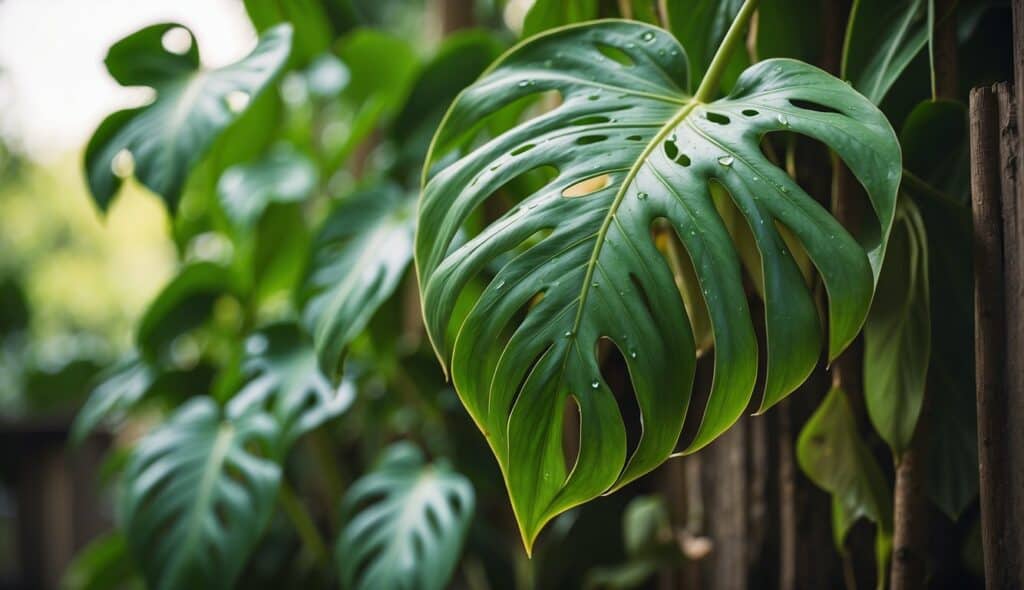
How do I care for a Monstera Adansonii to ensure healthy growth?
To ensure healthy growth of your Monstera Adansonii, it is important to provide it with bright, indirect sunlight and well-draining soil.
Water the plant thoroughly when the top inch of soil is dry, but be sure not to overwater as this can lead to root rot.
Fertilize the plant every two weeks during the growing season with a balanced fertilizer.
What are the differences between Philodendron Swiss Cheese and Monstera Adansonii?
While both plants have similar holey leaves, Philodendron Swiss Cheese and Monstera Adansonii are actually different species.
Monstera Adansonii has smaller leaves and more holes compared to Philodendron Swiss Cheese.
Additionally, the leaves of Monstera Adansonii tend to be more elongated and heart-shaped, while the leaves of Philodendron Swiss Cheese are more rounded.
What’s the best way to propagate a Monstera Adansonii vine?
The best way to propagate a Monstera Adansonii vine is through stem cuttings. Cut a stem just below a node and place it in water or moist soil.
Keep the cutting in a warm, humid environment and wait for roots to develop before transplanting to a larger pot.
How can I encourage my Monstera Adansonii to become more bushy?
To encourage your Monstera Adansonii to become more bushy, pinch off the tips of the vines.
This will cause the plant to produce new growth at the site of the pinch, resulting in a fuller, bushier plant.
Do I need to provide a trellis for my Monstera Adansonii, and if so, which kind is best?
While a trellis is not necessary for Monstera Adansonii, it can help support the plant and encourage upward growth.
A simple moss pole or bamboo stake can be used as a trellis.
It is important to choose a trellis that is sturdy enough to support the weight of the plant as it grows.
Why does my Monstera Adansonii vine have no leaves, and how can I fix it?
If your Monstera Adansonii vine has no leaves, it may be due to lack of light or overwatering.
Move the plant to a brighter location and adjust your watering schedule.
If the plant is severely damaged, it may be necessary to prune it back to encourage new growth.






